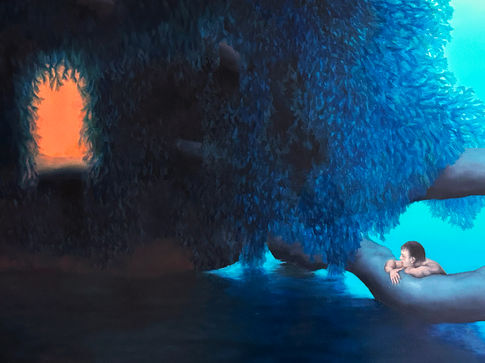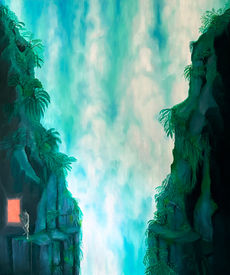
February 2025 | Art & Culture
HIDDEN LIGHTS
words Laura Cottrell





Italian visual artist Geppy Pisanelli has returned to GR Gallery in New York with Hidden Lights, a solo exhibition exploring the dynamic interplay between nature and artificiality, on view until March 15th..
Rooted in both narrative and compositional intent, the artist's latest works juxtapose natural elements—such as waterbeds, trees, mountains, and waterfalls—with artificial structures, including minimalist shelters and artificial lighting. By placing human-made objects in unexpected natural settings, Pisanelli creates a visual tension that challenges perceptions of reality. This contrast, both poetic and unsettling, invites viewers to reconsider the boundaries between organic and constructed worlds.
The exhibition’s title, Hidden Lights, immediately suggests a paradox: light, traditionally linked to illumination and clarity, is described as hidden. This conceptual contradiction mirrors the layered interplay of visibility and obscurity in Pisanelli’s compositions. Through a precise balance of form, subject, and content, the artist crafts enigmatic scenes that feel at once familiar and dreamlike, triggering a sense of intellectual and visual alienation.
THRESHOLD IMAGES and THE SEARCH for CONNECTION





Born in 1971, Geppy Pisanelli is an Italian visual artist whose practice revolves around painting as a medium of communication. His work is deeply engaged with the creation of archetypal images—compositions that initially appear as realistic depictions but gradually reveal metaphorical and psychological layers.
"At the core of my work is the idea of 'threshold images'—scenes that invite the viewer to step inside, much like entering a theatrical stage. Through recurring motifs that I call 'minimum survival units'—bridges, tents, poles, ropes, sea rafts, and human figures—I strive to transcend cultural boundaries, presenting timeless and universal forms."
Pisanelli’s work echoes the notion that human existence is deeply interconnected. Referencing Thomas Merton’s reflection that “no man is an island”, his paintings suggest that our shared pursuit of connection and understanding may be essential for survival. This theme becomes particularly poignant in his latest series, where the imagery resonates with the opening lines of D.H. Lawrence’s Lady Chatterley’s Lover (1928), written in the aftermath of war:
"Ours is essentially a tragic age, so we refuse to take it tragically. The cataclysm has happened, we are among the ruins, we start to build up new little habitats, to have new little hopes."
With Hidden Lights, Pisanelli continues this reflection, offering glimpses of resilience and renewal in an era of uncertainty. His paintings do not merely depict landscapes but rather construct psychological spaces—thresholds between the seen and the hidden, the real and the imagined.
